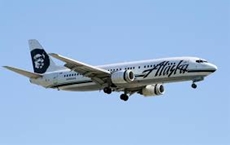Wood waste fuels Alaska Airlines' Seattle-Washington DC flight
16 Nov 2016
On Monday Alaska Airlines operated a historic cross-country flight from Seattle to Washington DC, powered by a 20 per cent blend of sustainable aviation biofuel.
 The alternative jet fuel was made from leftover limbs and branches harvested at managed forests, with help from the Northwest Advanced Renewables Alliance (NARA). According to the airline, the industry-first alternative jet fuel was "chemically indistinguishable" from regular jet A fuel.
The alternative jet fuel was made from leftover limbs and branches harvested at managed forests, with help from the Northwest Advanced Renewables Alliance (NARA). According to the airline, the industry-first alternative jet fuel was "chemically indistinguishable" from regular jet A fuel.
According to experts, if Alaska Airlines were able to replace one-fifth of its entire fuel supply at Seattle-Tacoma International Airport with the biofuel in the future, greenhouse gas emissions would be reduced by 142,000 metric tons of CO2, which was equivalent to taking roughly 30,000 passenger vehicles off the road for an entire year.
"This latest milestone in Alaska's efforts to promote sustainable biofuels is especially exciting since it is uniquely sourced from the forest residuals in the Pacific Northwest," said Alaska Airlines' senior vice president of communications and external relations Joe Sprague in a statement.
"NARA's accomplishments and the investment of the US Department of Agriculture provide another key in helping Alaska Airlines and the aviation industry reduce its carbon footprint and dependency on fossil fuels."
In March of this year, United Airlines pledged to use a 30-per cent biofuel mixture on its flights from Los Angeles to San Francisco. The fuel that United Airlines would use had been developed by a company called AltAir Fuels and is made from a variety of biological source materials ''from used cooking oil to algae.''
The fuel that Alaska Airlines used was developed by Colorado-based, Gevo, which partnered with the NARA to develop the wood waste into isobutanol, which it then converted to jet fuel.
A Gevo representative said in an email to Ars Technica that the Alcohol-To-Jet (ATJ) fuel the company supplied to Alaska Airlines ''provides about 2 percent more energy because of its tailored composition. This means more miles flown per gallon of fuel.'' It was also free of pollutants commonly contained in jet fuel like sulphur, he added.






.webp)















